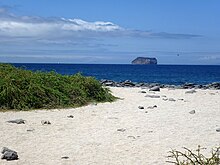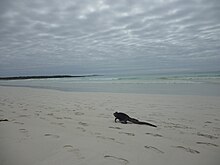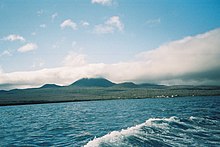Santa Cruz or Santacruz may refer to:
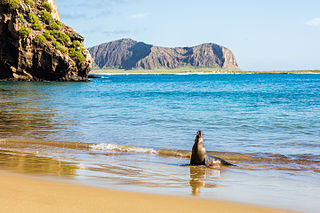
The Galápagos Islands are an archipelago of volcanic islands in the Eastern Pacific, located around the Equator 900 km (560 mi) west of South America. They form the Galápagos Province of the Republic of Ecuador, with a population of slightly over 33,000 (2020). The province is divided into the cantons of San Cristóbal, Santa Cruz, and Isabela, the three most populated islands in the chain. The Galápagos are famous for their large number of endemic species, which were studied by Charles Darwin in the 1830s and inspired his theory of evolution by means of natural selection. All of these islands are protected as part of Ecuador's Galápagos National Park and Marine Reserve.

The marine iguana, also known as the sea iguana, saltwater iguana, or Galápagos marine iguana, is a species of iguana found only on the Galápagos Islands (Ecuador). Unique among modern lizards, it is a marine reptile that has the ability to forage in the sea for algae, which makes up almost all of its diet. Marine iguanas are the only extant lizard that spends time in a marine environment. Large males are able to dive to find this food source, while females and smaller males feed during low tide in the intertidal zone. They mainly live in colonies on rocky shores where they bask after visiting the relatively cold water or intertidal zone, but can also be seen in marshes, mangrove swamps and beaches. Large males defend territories for a short period, but smaller males have other breeding strategies. After mating, the female digs a nest hole in the soil where she lays her eggs, leaving them to hatch on their own a few months later.

Puerto Ayora is a town in central Galápagos, Ecuador. Located on the southern shore of Santa Cruz Island, it is the seat of Santa Cruz Canton. The town is named in honor of Isidro Ayora, an Ecuadorian president. The town is sometimes mistakenly referred to as Santa Cruz. Puerto Ayora is the most populous town in the Galápagos Islands, with a population of 12,696.

San Cristóbal Island, also known as Chatham Island, is the easternmost island in the Galápagos archipelago, as well as one of the oldest geologically. It is administratively part of San Cristóbal Canton, Ecuador.
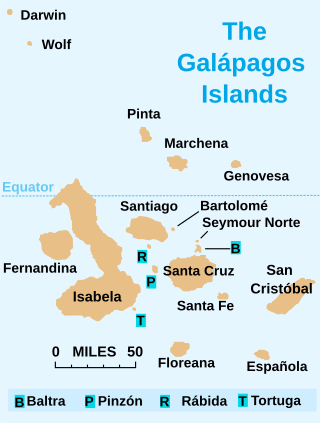
Isabela Island is the largest of the Galápagos Islands, with an area of 4,586 km2 (1,771 sq mi) and a length of 100 km (62 mi). By itself, it is larger than all the other islands in the chain combined and it has a little under 2000 permanent inhabitants. The island straddles the equator.

Santa Cruz Island, also known as Indefatigable Island and by other names, is the most populous and second-largest island in the Galapagos Archipelago in Ecuador. Situated in the middle of the group, Santa Cruz is a shield volcano with an area of 986 km2 (381 sq mi) and a maximum altitude of 864 m (2,835 ft). The seat of Santa Cruz Canton is Puerto Ayora on Santa Cruz. The island's total population is around 18,000 with those living in smaller villages chiefly working in agriculture and cattle raising.

Charles Darwin Research Station (CDRS) (Spanish: Estación Científica Charles Darwin, ECCD) is a biological research station in Puerto Ayora, Santa Cruz Island, Galápagos, Ecuador. The station is operated by the Charles Darwin Foundation which was founded in 1959 under the auspices of UNESCO and the World Conservation Union. The research station serves as the headquarters for the Foundation, and is used to conduct scientific research and promote environmental education. It is located on the shore of Academy Bay in the village of Puerto Ayora on Santa Cruz Island in the Galapagos Islands, with satellite offices on Isabela and San Cristóbal islands.
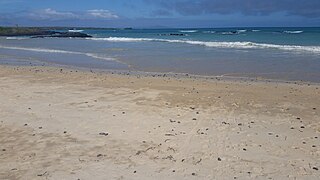
Santa Fe Island, also known as Barrington Island, is a small island of 24 square kilometres (9.3 sq mi) which lies in the middle of the Galápagos Archipelago in Ecuador. Visitor access is by a wet landing in Barrington Bay on the northeastern side of the island.

The Galápagos Marine Reserve (GMR) lies a thousand kilometres from the Ecuadorian mainland and covers an area of around 133,000 km2 (51,000 sq mi). The Galápagos Islands and the surrounding waters represent one of the world’s most unusual ecosystems and are rich areas of biodiversity. Recently granted UNESCO World Heritage Site status, the Galápagos Marine Reserve is the largest marine reserve in a developing country and the second largest reserve in the world.

San Cristóbal Canton is a canton of Ecuador in the Galápagos Islands archipelago and one of the oldest in this insular geological formation. It consists of Española, Floreana, Genovesa, San Cristóbal, and Santa Fe Islands.

Galápagos National Park was established in 1959. It began operation in 1968, and it is Ecuador's first national park and a UNESCO World Heritage Site.
Nesoryzomys indefessus, also known as the Santa Cruz nesoryzomys or Indefatigable Galápagos mouse, is an extinct species of rodent from the genus Nesoryzomys of family Cricetidae from Galápagos Islands of Ecuador. It formerly lived on Santa Cruz Island, but is now extinct, probably due to the introduction of black rats. Another related rodent, N. narboroughi, is sometimes considered to be a subspecies of N. indefessus.
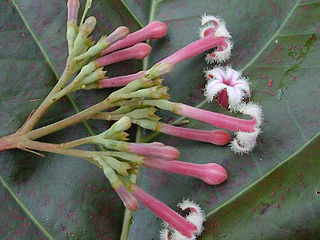
Cinchona pubescens, also known as red cinchona and quina (Kina), is native to Central and South America. It is known as a medicinal plant for its bark's high quinine content- and has similar uses to C. officinalis in the production of quinine, most famously used for treatment of malaria.

The Galápagos rice rat, also known as the Galápagos oryzomys, is a species of rodent that is endemic to the Galápagos Islands.

Guy Fawkes Island, properly the Guy Fawkes Islands, is an island group composed of two crescent-shaped islets—North Guy Fawkes I. and South Guy Fawkes I. —and two rocks located northwest of Santa Cruz Island in the Galápagos Archipelago in Ecuador. The group is uninhabited but sometimes visited by scuba divers.
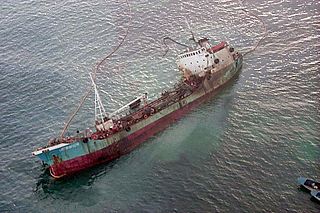
MV Jessica was an oil tanker that was involved in an oil spill in the Galápagos Islands, a chain of islands 972 km (525 nmi) west of continental Ecuador, of which they are a part. The ship was registered in Ecuador and owned by Acotramar. On the evening of 16 January 2001, Jessica ran aground at Wreck Bay, at the entrance to the port of Puerto Baquerizo Moreno, the capital of the Galápagos Province, located on the southwestern coast of San Cristóbal Island. The ship was carrying 600 tons of diesel oil and 300 tons of intermediate fuel oil. The diesel was destined for the fuel dispatch station on Baltra Island, while the fuel oil was destined for the tourist vessel Galapagos Explorer.

Ecuador has many beaches for surfing: the coast of Ecuador is 2,237 km long. Surfable waves are available in Ecuador year-round, and surfers enjoy the mild year-round weather, especially in the northern region where the weather conditions attract many surfers from all over the world. Within this part of South America, Ecuador's neighbors Chile and Peru also offer great surfing. Many surfers in Ecuador use a protective wetsuit. Surf tourism is very important to the local economy, and the beaches offer significant enjoyment because of top quality waves combined with affordable prices for lodging and food compared to other surf destinations. There's also a national marine reserve off the coast, which has a gigantic whale population.
Tortuga Bay is located on the Santa Cruz Island, about a 20-minute water-taxi ride from the main water taxi dock in Puerto Ayora. There is also a walking path, which is 1.55 miles (2,490 m) and is open from six in the morning to six in the evening. Visitors must sign in and out at the start of the path with the Galapagos Park Service office. Tortuga Bay has a gigantic, perfectly preserved beach that is forbidden to swimmers and is preserved for the wildlife where many marine iguanas, galapagos crabs and birds are seen dotted along the volcanic rocks. There is a separate cove where you can swim where it is common to view white tip reef sharks swimming in groups and on occasion tiger sharks
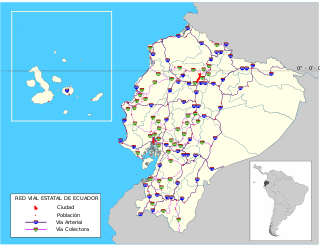
Ecuador Highway 5 (E5) is the westernmost trunk highway in Ecuador. The highway is known as the Insular Route, and it runs entirely within the Galápagos Islands. E5's northern terminus is on Baltra Island, at the Seymour Airport; its southern terminus on Santa Cruz Island, at El Garrapatero beach.
